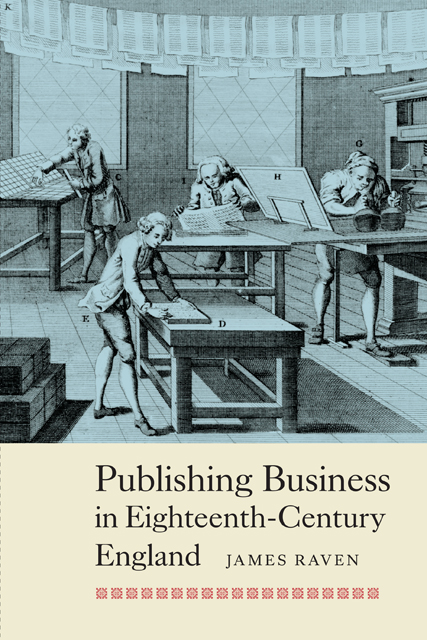Book contents
- Frontmatter
- Dedication
- Contents
- Acknowledgements
- Notes on Dates, Booksellers, Founts and Intaglio
- List of Abbreviations
- 1 The Mediation of the Press
- 2 England and the Uneven Economic Miracle
- 3 The Printed and the Printers
- 4 Serviced by Stationery and Printing
- 5 Printing and the City of London
- 6 Advertising
- 7 The Advertisers
- 8 Intelligence
- 9 Instruction and Guidance
- 10 Wider Discussion
- 11 Business, Publishing and the Gentleman Reader
- Conclusion
- Bibliography of Printed Sources
- Index
4 - Serviced by Stationery and Printing
Published online by Cambridge University Press: 28 February 2023
- Frontmatter
- Dedication
- Contents
- Acknowledgements
- Notes on Dates, Booksellers, Founts and Intaglio
- List of Abbreviations
- 1 The Mediation of the Press
- 2 England and the Uneven Economic Miracle
- 3 The Printed and the Printers
- 4 Serviced by Stationery and Printing
- 5 Printing and the City of London
- 6 Advertising
- 7 The Advertisers
- 8 Intelligence
- 9 Instruction and Guidance
- 10 Wider Discussion
- 11 Business, Publishing and the Gentleman Reader
- Conclusion
- Bibliography of Printed Sources
- Index
Summary
The business strategies of the printers reflected their locality as well as the strength of their client and market relationships. Long-term contracts and sustained demand for a specific publication were relatively rare. Flexibility and diversity of operation was usually the basis of survival. This was especially so given the underdevelopment of regional and local markets where the products of the printing house and the skills of the printer were adapted to an increasingly wide and experimental range of business needs.
Recovering the business profile of the eighteenth-century printer’s office is problematic. Much of the actual servicing of commerce by print has left fragmentary evidence and the diversity of the printers’ operations only adds to the confusion. Many sources seem unpromising. Original constituent contracts of the ‘financial revolution’ do survive, but usually they have featured only incidentally, if at all, in surveys of the development of joint-stock companies or government revenue operations. The history of overseas and inland trade has been constructed from diverse sources, but surviving printed chits of exchange are rarely considered in terms of their origination, design and use. Accounts of local retailing are even patchier, reliant upon the survival of shop accounts and trading advertisements.
Business historians have faced similar difficulties with the unevenness of eighteenth-century commercial and industrial records. Few examples survive of the many printed items that were ordered by businesses, revenue-raising bodies, or financial companies and it is often impossible to gauge their representativeness. The fragments of such jobbing printing are also treated very differently according to the wide variety of archives in which they reside. In many business and family archives, many such items remain uncatalogued, to be found simply by accident in boxes and files of named papers and letters. At the other extreme, some filled-in printed blanks, including receipt slips, promissory notes and cargo dockets, are individually catalogued components of cherished institutional collections.
The removal of these slender items from their original working business archive, however, only heightens their isolation and the difficulty in interpreting their original use and significance. Evidence of orders sent to printers and corresponding evidence of production compensate for some of the archival and interpretational complications of surviving printed and part-printed jobbing items.
- Type
- Chapter
- Information
- Publishing Business in Eighteenth-Century England , pp. 63 - 84Publisher: Boydell & BrewerPrint publication year: 2014



